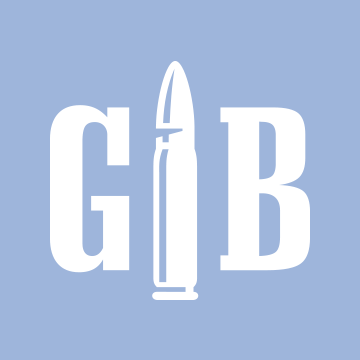I just acquired a very odd FN-proofed M24 short rifle with a crest that I can find very little info on: 1930 stamped over N.S.K with no manufacturer info on the side rail. Note that there is no period after the K, not sure this is meaningful or not. I will post more pics and details when I receive the rifle but here is what I can tell you now.
The receiver and trigger guard have matching serials, straight bolt and barrel do not. Locking screw on trigger guard is to the rear of the action screw, suggesting this is an M24 intermediate length action.
Stock matches itself but is clearly of Yugo design, carrying the King Peter II cartouche and other Serbian Cryillic letters. King Peter reigned from 1934 to 1945, dating the manufature date of the stock
What I can see of the receiver from the pics I have shows no Serbian/Yugo markings and only the FN/Belgian Lion over PV and Perron proof marks on the receiver and bolt.
My real interest here is finding out who or what N.S.K is all about. What little I have found on the N.S.K rifles on the internet (literally one ref), and from correspondence with a few knowledgeable Milsurp collectors suggests several lines of inquiry:
1. Bubba made a bunch of these from old FN M24 junkers and is laughing up his sleeve as I write this. Painful to hear but possible.
2. The font style of the "1930" is identical to late-stamped Chinese exports from FN, possibly made for a local police force or paramilitary group. I can't find any refs on Chinese exports dated 1930 but that doesn't mean it didn't happen.
3. Chinese made Model 21 short rifle, a knock-off of FN Model 30. Lack of FN name and location on the side rail supports this idea but most M21s have gibberish stamped on the side rail and/or obviously fake FN logos on the crest, neither of which occur on this rifle.
4. Original FN-built M24 export to Serbia, refurbished by Serbia or Yugoslavia and issued as second-line rifle to police or other paramilitary organization. The city of Nis, formerly Niche, has been suggested as a possible link.
5. Rifles were made by FN for NSK, the Japanese ball-bearing manufacturer. I doubt this is plausible but it is possible.
I will post more pics when rifle arrives but wanted to get this out to Gunboards members to see what sort of info is out there. Thanks in advance for any guidance here.
![Image]()
![Image]()
![Image]()
The receiver and trigger guard have matching serials, straight bolt and barrel do not. Locking screw on trigger guard is to the rear of the action screw, suggesting this is an M24 intermediate length action.
Stock matches itself but is clearly of Yugo design, carrying the King Peter II cartouche and other Serbian Cryillic letters. King Peter reigned from 1934 to 1945, dating the manufature date of the stock
What I can see of the receiver from the pics I have shows no Serbian/Yugo markings and only the FN/Belgian Lion over PV and Perron proof marks on the receiver and bolt.
My real interest here is finding out who or what N.S.K is all about. What little I have found on the N.S.K rifles on the internet (literally one ref), and from correspondence with a few knowledgeable Milsurp collectors suggests several lines of inquiry:
1. Bubba made a bunch of these from old FN M24 junkers and is laughing up his sleeve as I write this. Painful to hear but possible.
2. The font style of the "1930" is identical to late-stamped Chinese exports from FN, possibly made for a local police force or paramilitary group. I can't find any refs on Chinese exports dated 1930 but that doesn't mean it didn't happen.
3. Chinese made Model 21 short rifle, a knock-off of FN Model 30. Lack of FN name and location on the side rail supports this idea but most M21s have gibberish stamped on the side rail and/or obviously fake FN logos on the crest, neither of which occur on this rifle.
4. Original FN-built M24 export to Serbia, refurbished by Serbia or Yugoslavia and issued as second-line rifle to police or other paramilitary organization. The city of Nis, formerly Niche, has been suggested as a possible link.
5. Rifles were made by FN for NSK, the Japanese ball-bearing manufacturer. I doubt this is plausible but it is possible.
I will post more pics when rifle arrives but wanted to get this out to Gunboards members to see what sort of info is out there. Thanks in advance for any guidance here.







